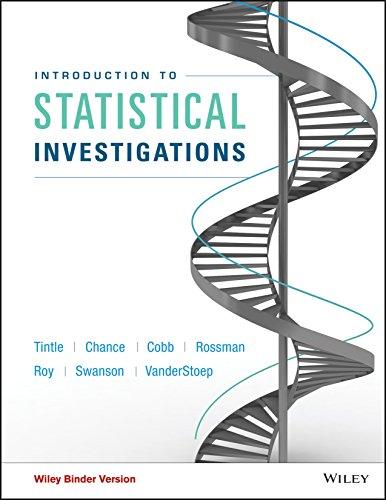Read FAQ 5.2.1 about comparing the statistics difference in proportions and relative risk. In the dolphin therapy
Question:
Read FAQ 5.2.1 about comparing the statistics difference in proportions and relative risk. In the dolphin therapy study mentioned in that FAQ there were 15 people assigned to swim with dolphins and 15 who were not (the control). We also saw that 13 people showed improvement of their depression symptoms and 17 did not. Suppose that 9 in the dolphin therapy group showed improvement.
a. How many in the dolphin therapy group did not show improvement?
b. How many in the control group showed improvement?
c. How many in the control group did not show improvement?
d. What is the difference in proportions of improvers for this scenario?
e. What is the relative risk for this scenario?
f. If we kept 15 in each group and still had 13 improvers and 17 non-improvers, could the number of improvers in the dolphin therapy group be something other than 9 and still get the same difference in proportions and relative risk that you got in parts (d) and (e)?
g. Using your answer to part (f) describe the relationship between null distributions when a difference in proportions is used as the statistic compared to when relative risk is used as the statistic.
Step by Step Answer:

Introduction To Statistical Investigations
ISBN: 9781118172148
1st Edition
Authors: Beth L.Chance, George W.Cobb, Allan J.Rossman Nathan Tintle, Todd Swanson Soma Roy





